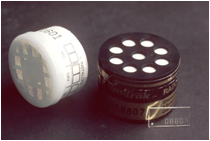
What is radon?
Radon is a deadly gas that cannot be detected by the human senses. It has no taste, smell or color and exposure to radon will not result in immediate health problems. However, prolonged exposure to radon can cause serious health problems, like lung cancer, down the road – after its too late.
Wondering how serious the threat is? Radon is the leading cause of lung cancer among nonsmokers and claims approximately 20,000 victims each year according to the EPA. The reason for so many deaths? It attacks you in places where you feel safe. At home, in the office and at school. Radon usually accumulates at an accelerated rate in confined spaces like crawl spaces, attics and basements.
Radon is formed as a decay product of uranium which is found naturally in our environment in soil, rocks and water. Radon gas can seep into a home or building from surrounding soil, cracks in the foundation or walls, and exposed drains and pipes. Indoor air quality in new homes as well as old homes can be affected by radon. Northern and Midwest states are generally at a greater risk for radon exposure, but it’s important to note that the radon threat exists in every state.
The good news is that radon exposure is easy to prevent and knowing is truly half the battle. It’s also inexpensive to test for radon. Radon detectors can be purchased from local hardware stores and retail outlets. There are two types of tests. Short-term radon testing (usually a few weeks) is the fastest way to check for radon while long-term testing (up to a year) has proven to be more accurate.
Olshan recommends checking for Radon regardless of where you live or how new or old your home may be. While some states are more at risk than others, radon can strike anywhere. If you do have elevated levels of radon in your home then radon mitigation is your next step.
Finding a contractor that can perform radon mitigation shouldn’t be too difficult but it’s important to thoroughly vet potential radon contractors. Make sure they are properly certified and are in good standing with the BBB. It’s also a good idea to check references. Radon reduction isn’t an overly expensive job, but it’s an important one, so make sure you make the right hire. An experienced radon specialist will be able to help you determine which radon reduction system will work best for your home. Not every home is the same which means not every radon reduction system should be the same. Find a solution you’re comfortable with and be sure to get a few different estimates along the way.
If you’re looking for more information on Radon, join the conversation on Facebook. We have a ton of tips and helpful resource links posted this month. We also encourage you to join the team here at Olshan and participate in National Radon Action Month by helping spread the word about this deadly gas. For full details on this great program, click here.
